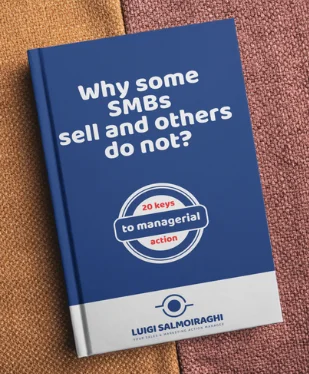

Digitalisation (globalisation) has made the borders that previously seemed impossible for small and medium-sized entrepreneurs today nothing more than a perfectly surmountable obstacle.
Because multiplying spaces is multiplying the chances of success at the end of the day.
These fears are found before starting the process, and they are not economic or operational; they are psychological.
Entrepreneurs are usually involved in their business’s entire process, which imprints character.
On the other hand, internationalization requires delegating, creating teams, etc.
This task is difficult for those used to getting involved in all aspects because the entrepreneur must be aware that his management model also has to change.
To achieve this, the SME must know the formal rules of the game – legislation, for example – and non-formal rules – culture, language, etc. – both in the country of origin and the country of destination.”
With this, and with courage, there is no inaccessible border.
There are psychological barriers to this process.
All companies feel more comfortable in their home markets. To overcome this obstacle, think that your company is selling in Spain, the European market and, therefore, one of the most competitive in the world. Thus, any successful SME with exportable goods or services can compete in other markets.
The language or culture of the market forces you to adapt to its parameters, and for that, the first thing is to know them.
Adaptation ranges from “the labelling of the products to the colours or tastes.
Often, when the market you want to enter is geographically farther away, the fears are more significant.
This is gradually being solved thanks to the new generations of young people. New generations have studied abroad, know other languages, and are used to undertaking long journeys in short periods.
As time passes and globalisation has changed mentalities and economies, countries and foreign markets have become closer.
However, this ease of travel has kept economies from losing the cultural and distinctive characteristics of the countries that gave birth to them.
These traits are not limited to language or culture but go much further.
If there is one clear thing, it is that dependence on the domestic market, although more comfortable, implies the assumption of enormous risks since the company’s future, instead of depending on several economic scenarios, becomes solely and exclusively dependent on its own.
The one known forever, and if it fails, so will the company. This is different when other markets have been conquered.
Digitalisation (globalisation) has made the borders that previously seemed impossible for small and medium-sized entrepreneurs today nothing more than a perfectly surmountable obstacle.
Because multiplying spaces is multiplying the chances of success at the end of the day.
These fears are found before starting the process, and they are not economic or operational; they are psychological.
Entrepreneurs are usually involved in their business’s entire process, which imprints character.
On the other hand, internationalization requires delegating, creating teams, etc.
This task is difficult for those used to getting involved in all aspects because the entrepreneur must be aware that his management model also has to change.
To achieve this, the SME must know the formal rules of the game – legislation, for example – and non-formal rules – culture, language, etc. – both in the country of origin and the country of destination.”
With this, and with courage, there is no inaccessible border.
There are psychological barriers to this process.
All companies feel more comfortable in their home markets. To overcome this obstacle, think that your company is selling in Spain, the European market and, therefore, one of the most competitive in the world. Thus, any successful SME with exportable goods or services can compete in other markets.
The language or culture of the market forces you to adapt to its parameters, and for that, the first thing is to know them.
Adaptation ranges from “the labelling of the products to the colours or tastes.
Often, when the market you want to enter is geographically farther away, the fears are more significant.
This is gradually being solved thanks to the new generations of young people who have studied abroad, know other languages, and are used to undertaking long journeys in short periods.
As time passes and globalisation has changed mentalities and economies, countries and foreign markets have become closer.
However, this ease of travel has kept economies from losing the cultural and distinctive characteristics of the countries that gave birth to them.
These traits are not limited to language or culture but go much further.
If there is one clear thing, it is that dependence on the domestic market, although more comfortable, implies the assumption of enormous risks since the company’s future, instead of depending on several economic scenarios, becomes solely and exclusively dependent on its own.
The one known forever, and if it fails, so will the company. This is different when other markets have been conquered.

